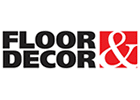By Jim Clanin
It’s mid-summer and hard to believe we’re halfway through 2014. Looking to next year, there are some website design trends we anticipate as being fairly predictable to stand out in web design in 2015. These three trends are popular this year, and because of their efficiency and attention to bettering user experience, adapting to an expected increase in mobile device usage, decreasing search time, and a ‘less is more’ philosophy when it comes to design, these trends will likely be trending for several years to come.
Flat Design – Keeping it Simple
Although flat design isn’t new, flat design of banners, logos and web pages is the most popular design trend currently. Flat design is a minimalistic style and approach to designing websites where the flashy elements we were used to several years back like gradients, shadows, and 3d elements are removed, and design has returned to the bare necessities or basics. Because of its simplicity, flat design provides more usability from the user point of view. Additionally, as more website visitors are using hand-held devices like smart phones or tablets, designers are leaning towards flat design that work well on these devices, and that appear smooth and simple. As a bonus, flat design websites are lightweight and download quickly! Flat design is here to stay, and will grow in popularity in 2015.
flashy elements we were used to several years back like gradients, shadows, and 3d elements are removed, and design has returned to the bare necessities or basics. Because of its simplicity, flat design provides more usability from the user point of view. Additionally, as more website visitors are using hand-held devices like smart phones or tablets, designers are leaning towards flat design that work well on these devices, and that appear smooth and simple. As a bonus, flat design websites are lightweight and download quickly! Flat design is here to stay, and will grow in popularity in 2015.
More Scrolling, Less Clicking
Website users are becoming more efficient at searching and scanning when they visit a website, and with mobile devices they have become adapt to scrolling when searching online. Users want efficiency when they are searching or browsing a website. Because of this change in user behavior and increased mobile device usage, scrolling sites are growing in popularity. A scrolling site allows users to scroll up and down through everything on a website in a single page, rather than clicking on several pages of a site to find what they are looking for.
Websites that include dozens of pages offering services or products are on their way out. Each time a user clicks to a new page, it can take 1-3 seconds to open a new page, which can deter users from staying on a website. A scrolling page gives the user a quicker search experience, allowing the user to scan and scroll the site quickly making the search and website experience more efficient and easier, especially on mobile devices. Although multiple page website receive more SEO influence, scrolling continues to win over tablet and smart phone users. We predict that with the increase in mobile usage, we’ll be seeing more scrolling website designs in 2015.
Responsive Design – Catering to Every Device
Chances are good that reading this blog on a mobile device. It has been estimated that mobile online search will overtake laptops and desktops in 2015, so website designers must adapt. Websites that are exclusively developed for mobile devices may not work well on desktops or laptops, and vise versa. If you can’t easily browse a website on your iPhone or Android smartphone, will you continue to browse the site or leave it in search of a more usable site? Most will leave a site that is difficult to navigate and don’t return.
Because of the increase in usage on several devices, responsive design has become an all-in-one solution. Websites designed with responsive design standards and elements deliver an equal user experience across all devices – desktop, laptop and mobile. Responsive websites detect the user screen size the website is being pulled up on, and automatically adjusts to fit the screen size. Also, because of the increased online usage for other devices like wearables, smart house devices, iTVs, etc., responsive design will continue to change rapidly to continue to keep up with all emerging internet connected devices that make their way into the marketplace.
Though we don’t have a crystal ball for web design in 2015, improvements in web development and design in 2014 can give us some confidence that these predictions are more likely than not to be accurate.








